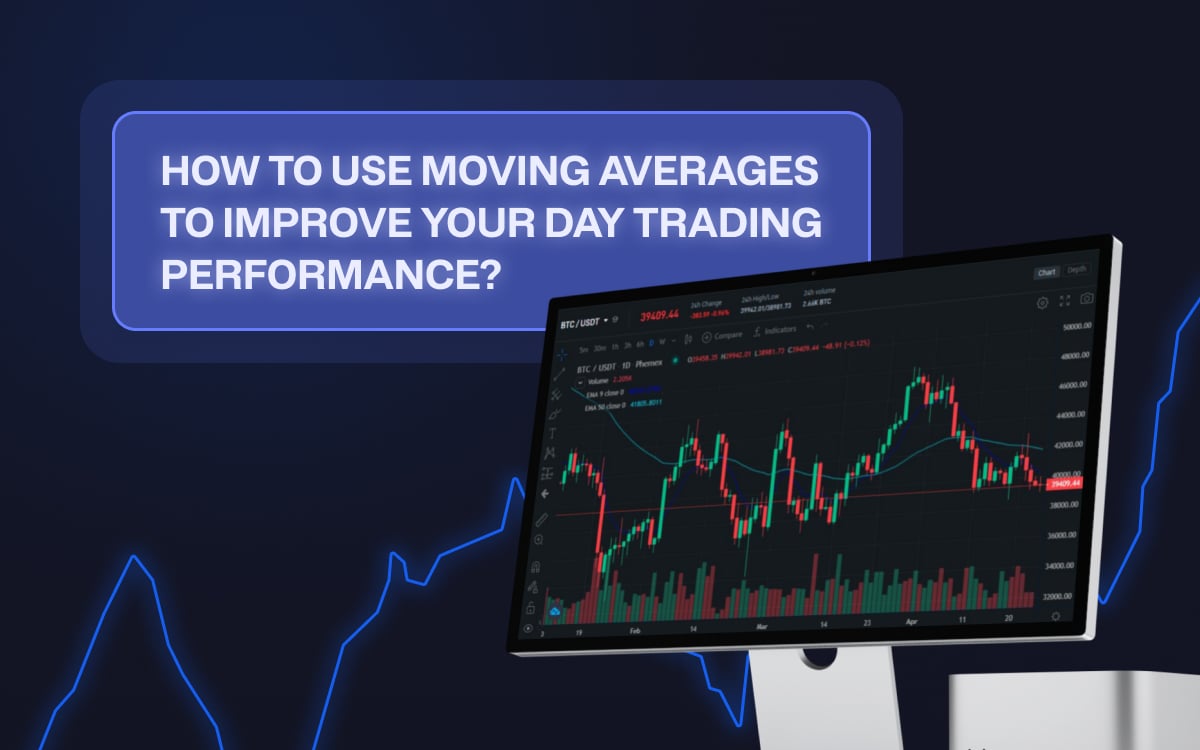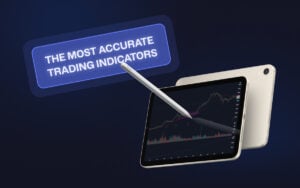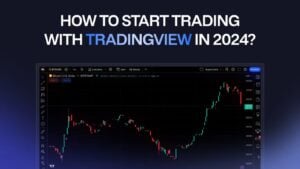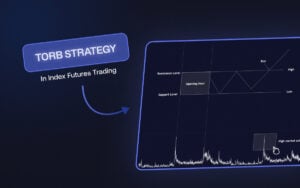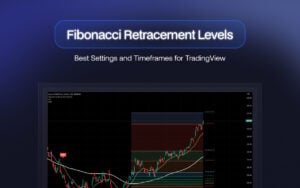The Moving Average (MA) is easily the most popular indicator in trading. The concept behind this indicator is fairly simple, as you can probably figure out by reading the name. Yes, it has something to do with “average values.”
Simply put, a Moving Average is the average of stock prices over a certain period, wherein this period is “moving” to ensure the average value is consistently updated. Let’s discuss what that means and further explore how you can integrate moving averages into your day trading arsenal to boost your trading performance.
Understanding Moving Averages
A moving average encapsulates past price action at its core, smoothing out transient noise to reveal the underlying trend. There are different types of moving averages, and one must understand the components of the moving average indicator to understand them.
Time Frames and Periods
The moving average can be defined in any time frame, be it 1 minute, 1 day, or a whole week. The period is the interval within which the arithmetic average of the stock prices is to be calculated. Popular periods include 5, 9, 20, 100 and 200.
A 20-period MA in a 1-minute time-frame means the averages are calculated over 20 minutes, similarly 20 days in case of a 1-day time frame, and so on.
SMA and EMA
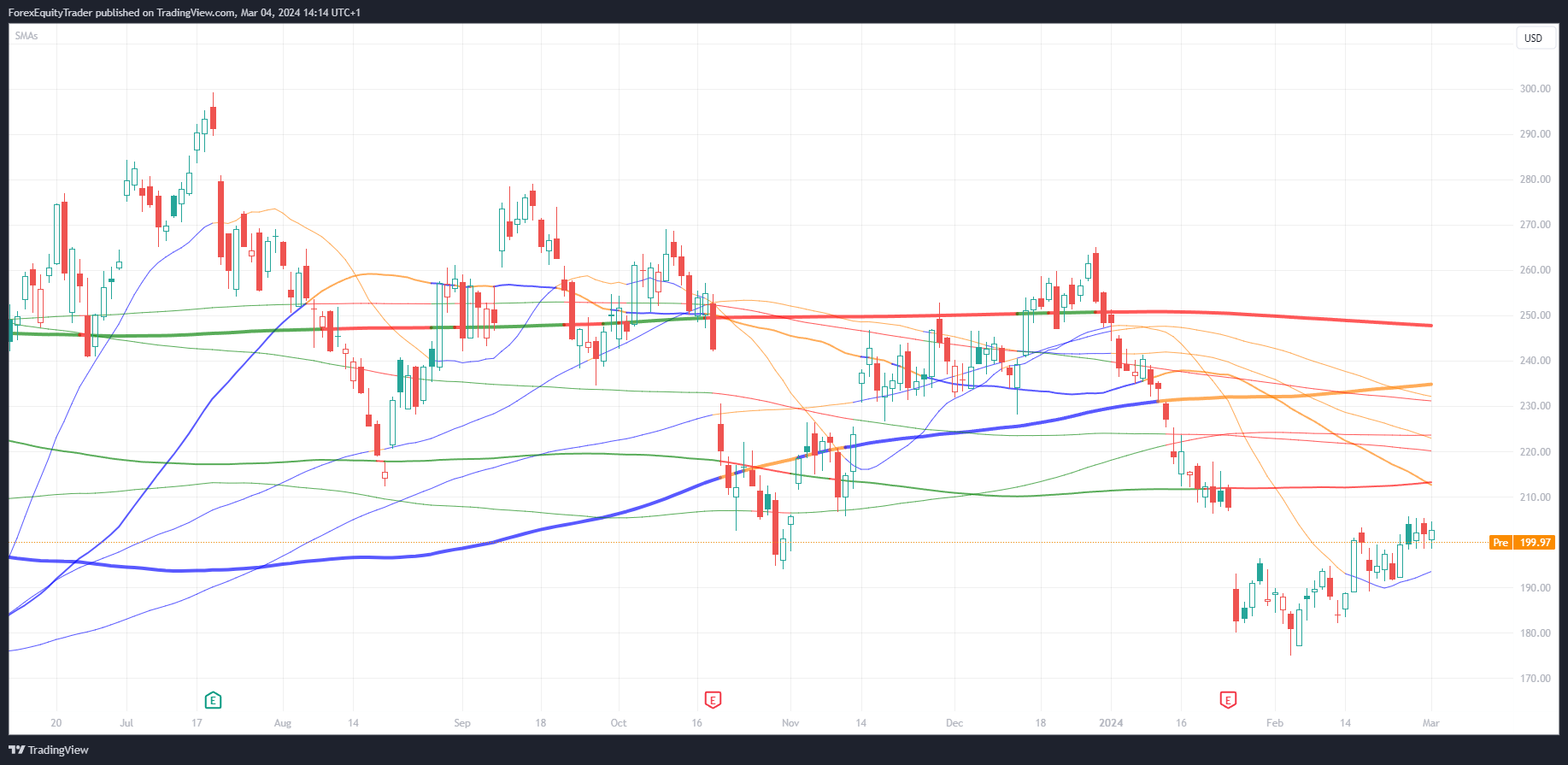
SMA stands for Simple Moving Average. It is the most basic type of moving average, given by the formula:
SMA = {i=1nPi}n Where Pi is the stock’s average price in the ith period and n is the total number of periods.
For instance, if you have data worth 10 days in a 1-day time frame and wish to calculate the 5SMA, you’ll have to add the prices of days 1 to 5, divide them by 5, and repeat this process for periods 2 to 6, 3 to 7, 4 to 8, 5 to 9 and 6 to 10. Once you get all the values, plot them to get the SMA.
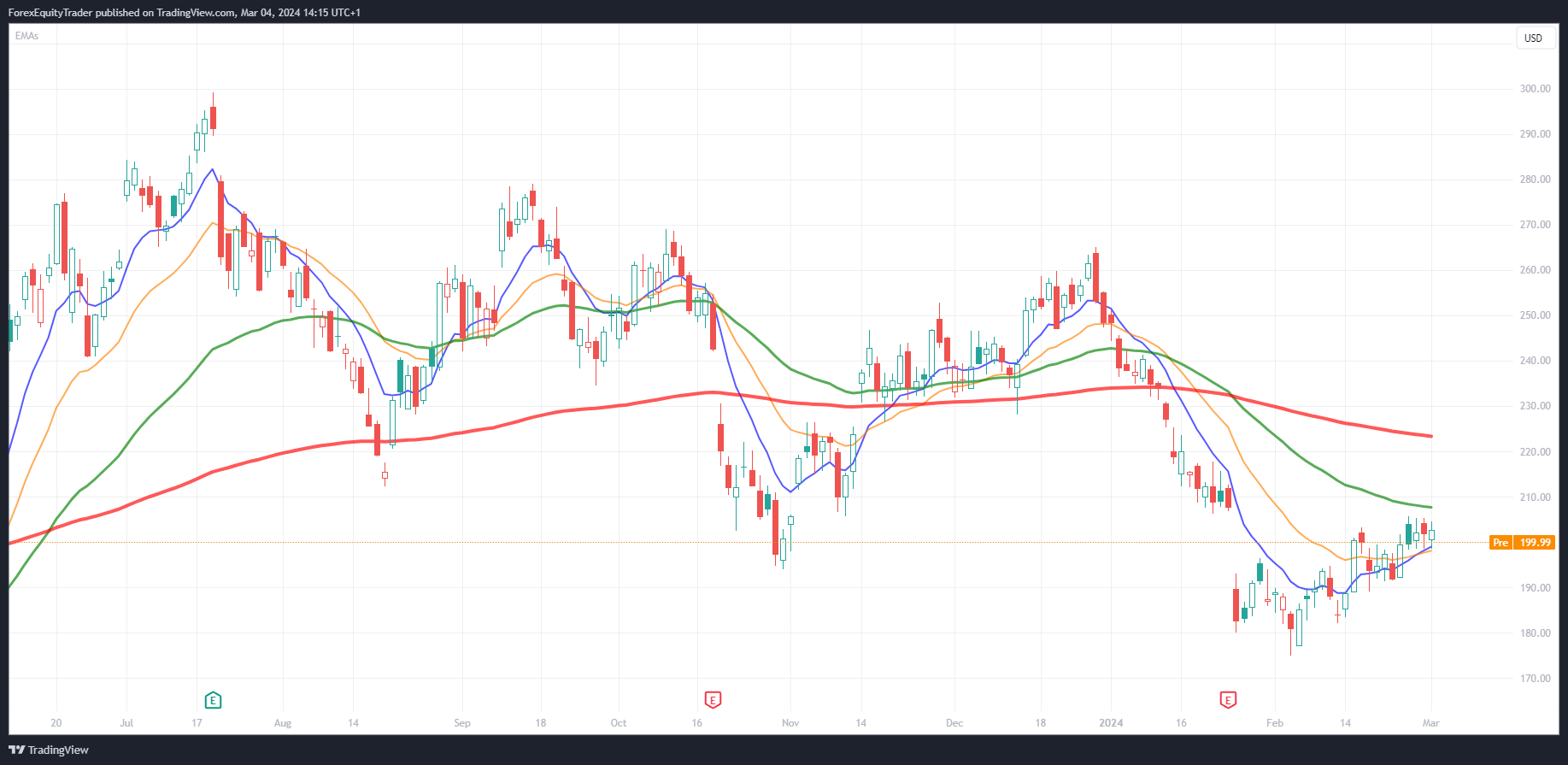
EMA stands for Exponential Moving Average; it’s more responsive than SMA since it uses the concept of “weights.” A higher weight is assigned to newer values, which means the most recent price affects the MA more than the older ones, considering a “smoothing constant.” This is why EMA is more responsive.
There are also two more types of moving averages—the smoothed moving average or SMMA, which is just EMA but with a decreased multiplier, and the linearly weighted moving average or LWMA, which is yet again similar to EMA instead with a linear increment in weight as compared to an exponential one in EMA.
Moving Averages in Day Trading
Time Frames and Periods for Day Trading
Day traders typically operate within smaller time frames—1-minute, 3-minute, or 5-minute intervals—where every tick heralds a potential inflection point in market sentiment. The 9-period and 20-period EMAs are amongst the most respected indicators regarding day trading.
Using 2 EMAs is standard for many strategies, including the crossover, which we will discuss further in this article. For a 1-minute time frame, the 9 and 20 EMA make a great combo, similarly, for a 5-minute time frame, the 20 and 50 EMA are a popular choice.
Day traders also like to use Fibonacci sequence-based EMAs. For instance, the 8, 13, and 21 strategy uses 8 EMA, 13 EMA, and 21 EMA.
Identifying Trends
It’s fairly simple to identify trends using moving averages. If you have an EMA indicator showing a positive slope and is below the price, it’s a clear sign that the market sentiment is bullish. It’s an uptrend. You might also use the EMA here as support.
On the other hand, if the EMA indicator is above the price and in a downtrend, it’s a sign that the market is bearish and it’s time to short. One may use the EMA in this case as potential resistance.
Identifying Supports and Resistances Using MA
With a keen eye for observation and a few handy techniques, you can turn EMAs into reliable, ever-changing allies in identifying support or resistance levels. Here are some things to keep in mind as you explore this approach:
- Observing Price Interaction: Watch how the price interacts with the EMAs. When the price approaches an EMA from above and bounces off it, that EMA can act as support. On the other hand, when the price approaches an EMA from below and encounters resistance, that EMA serves as resistance.
- Multiple Touches: Look for EMAs tested multiple times by the price. The more times an EMA has acted as support or resistance, the more significant it becomes.
- Confluence with Other Factors: Consider other factors such as trendlines, horizontal support and resistance levels, and chart patterns. When EMAs align with these other factors, the support or resistance level strengthens.
- Volume Confirmation: Pay attention to volume when the price interacts with EMAs. High volume on a bounce off an EMA suggests strong support or resistance.
- Timeframe Consideration: Remember to analyze different timeframes to get a comprehensive view. What appears as support or resistance in a shorter timeframe may not be as significant in a longer timeframe.
- Historical Data Analysis: Review historical price action to identify recurring patterns of price reacting to specific EMAs. This can help anticipate future support and resistance levels.
Popular Day Trading Strategies Using MA
Crossover Strategy: As the name suggests, the crossover strategy utilizes the crossover of two indicators to generate buy or sell signals. Here’s how the crossover strategy works with two EMAs:
- Selecting Indicators: The crossover strategy typically involves selecting two indicators that capture different aspects of price movement. For instance, a short-term EMA is a 9-period, and a long-term EMA is a 20-period.
- Entry and Exit points: It’s a solid sign to buy when you see the shorter-term EMA “crossover” and the longer-term one in an uptrend. The trend gets stronger as the lines separate more over time. Eventually, when the lines cross again, it’s time to sell.
- Confirmation: Traders frequently seek reassurance of the trend and entry signals by consulting other indicators or analyzing price movements. This might involve gauging the trend’s strength with tools like the Relative Strength Index (RSI) or the Moving Average Convergence Divergence (MACD), paying attention to changes in trading volume, or pinpointing significant support and resistance levels.
- Risk Management: Effective risk management is crucial when implementing the crossover strategy. Traders should set stop-loss orders to limit potential losses and employ proper position sizing to manage risk effectively.
Rainbow Strategy: This strategy uses multiple EMAs where each MA is the EMA of the previous MA. This leads to a chart that resembles a rainbow, hence the name. For instance, let’s look at how the rainbow strategy works using a rainbow indicator with 3 EMAs.
You’ve to look for 3 conditions to be satisfied:
- The market closes above the third MA line.
- The first and second MA lines cross.
- There’s a bullish candle.
This is where you place your buy order and stop loss where the first and second MA lines cross.
To place the sell order, wait until the following conditions are satisfied:
- The first and second MA lines cross again.
- The market closes below the third MA line.
Common Mistakes
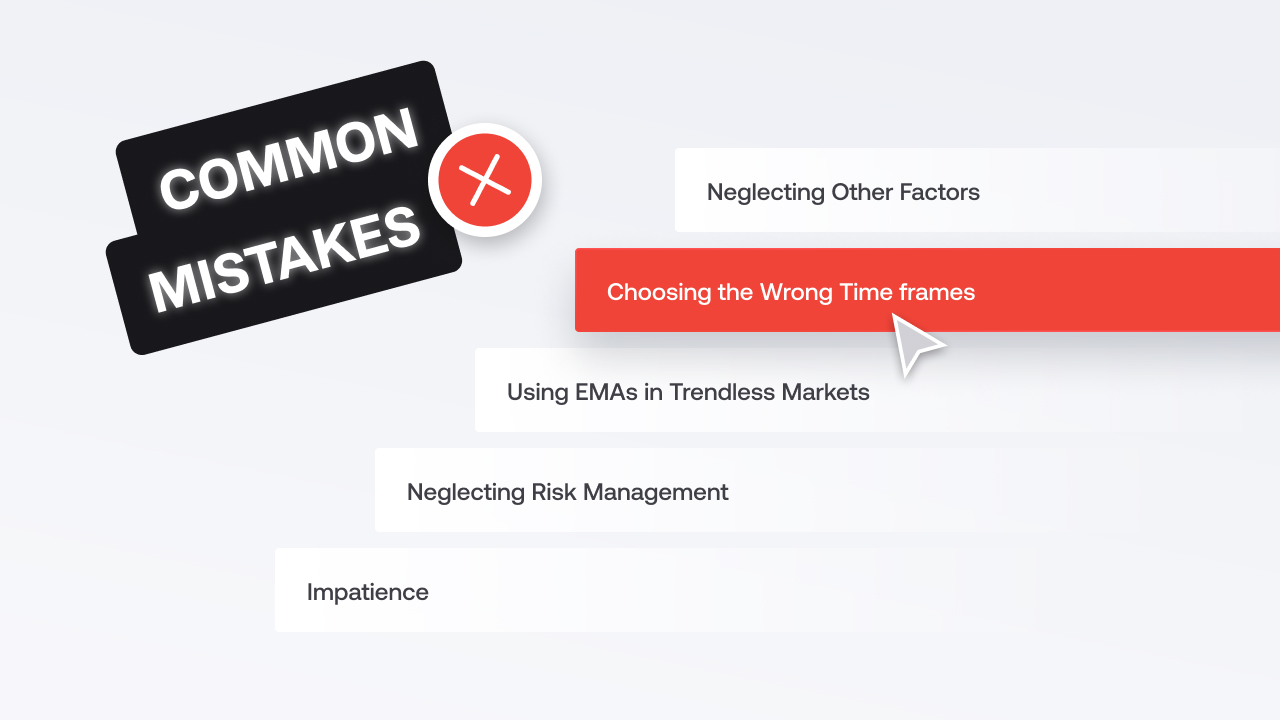
- Neglecting Other Factors: One common mistake traders often make is relying solely on EMAs without considering other crucial factors like trading volume, price patterns, support and resistance levels, and overall market sentiment. You’re missing out on vital cues that could guide you to success.
- Choosing the Wrong Time frames: Another pitfall is not matching the time frame of EMAs with your trading strategy and objectives. Selecting the appropriate time frame ensures that your signals align with your goals and the market conditions you’re facing.
- Using EMAs in Trendless Markets: Imagine trying to catch a wave in a swimming pool – that’s what it’s like using EMAs in a choppy or trendless market. These indicators thrive in trending markets but can produce unreliable signals in sideways markets. Recognizing when to sit on the sidelines is as important as knowing when to jump in.
- Neglecting Risk Management: Ignoring stop-loss orders, failing to manage position sizes, and neglecting risk-reward ratios is a recipe for disaster that can lead to significant losses.
- Impatience: If you’re impatient with your strategies, you might lose more than you win, the antithesis of an edge. Waiting for clear signals, exercising discipline, and sticking to your trading plan is essential for long-term success.
Disadvantages of MA
MA is a lagging indicator, which means whatever observations you make out of it reflect the past price action, not the best method to catalyze your decision-making. This is why it’s important to use Moving Averages with other indicators.
Conclusion
Moving Averages are great for understanding market trends and determining when to buy or sell stocks. But they do have a downside – they’re lagging in nature. That’s why using them and other tools is important to make smarter trading decisions. By combining Moving Averages with other indicators and techniques, we can get a clearer picture of what’s happening in the market and make better choices when trading.
